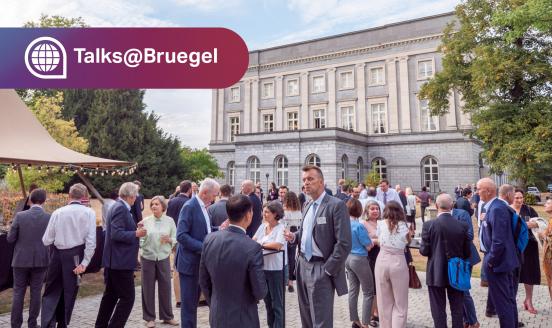Policies for digital innovation
We were pleased to welcome Paul Misener, Vice President of Global Public Policy at Amazon.com, to discuss innovation and regulation.
Speakers
Reinhilde Veugelers
Senior fellow
Paul Misener
Vice President for Global Public Policy, Amazon.com,
Stephan Raes
Head of Economic Department, Permanent Representation of the Netherlands to the EU,
Eva Chamizo
Director Brussels Office, Iberdrola,
Summary
See below for video recording.
Innovations pose novel questions for policymakers. Some are uncomfortable with the pace of innovation. Others stuggle with the fact that new technologies and services often do not fit neatly into existing regulatory systems, while long-term benefits are hard to predict. A balance needs to be found between the application of the precautionary principle and the innovation principle. Could customer-focused innovation itself have novel characteristics that should be recognised and appreciated by policymakers acting in the public interest?
Amazon has a consumer-focused way of innovating. Despite cultural differences among consumers across the globe, they all value greater choice, convenience and lower prices. When it comes to innovation, Amazon behaves like a start-up and has investors that take a longer-term view. Amazon has had very successful and unsuccessful innovations, technical and non-technical innovation and innovations in areas where they already had expertise as well as in areas where they did not.
E-commerce in Europe is between 5 and 13 percent of total retail and 7.5% in the US. This is much lower than we would have thought two decades ago. There is still room to grow, as well as room for multiple players.
Another company that has significantly improved its position in the market, partly due to innovation, is Iberdrola. Iberdrola has an open innovation concept, where its works in a network, alongside universities, manufacturers and technical centres. However, as innovations in this sector require huge investments, it is vital to have a regulatory framework that is stable and innovation-friendly. An example of an area where innovation is needed is to reach the decarbonisation objectives, where cheaper alternatives need to be introduced, in order to get consumers to switch. Smart grids are an example where innovation has been hampered by regulation.
However, not only regulation has an effect on innovation and the extent to which it takes place. The speed of innovation also has implications for regulation. In EU regulation scale potential, harmonising systems and creating a level playing field are deemed important. However, different types of innovation may need different types of regulation. Regulating every specific innovation model is not likely to be a solution. We need to look at how to improve flexibility levels while preserving scale economies.
Regulating the outcome instead of the process, as was done with renewables, may come at the risk of excluding new and potentially better types of products and services that do not match the outcome exactly.
Finding the balance between the innovation principle and precautionary principle is difficult. We need regulators that focus on real-world innovation, an open regulatory process. Digital single market barriers still need to be removed.
Event summary by Nuria Boot, research assistant
VIDEO RECORDING
Innovations pose novel questions for policymakers, some of whom are uncomfortable with the pace of innovation or simply the fact that new technologies and services often don’t fit neatly into existing regulatory systems. Could customer-focused innovation itself have novel characteristics that could be recognised and appreciated by policymakers acting in the public interest?
We were pleased to welcome Paul Misener, Vice President of Global Public Policy at Amazon.com to present on these issues, followed by comments from Eva Chamizo, Stephan Raes and other speakers.





